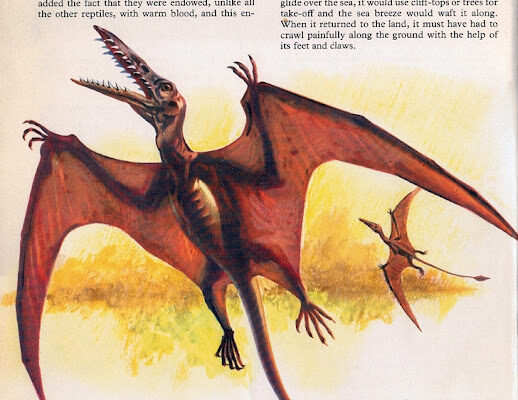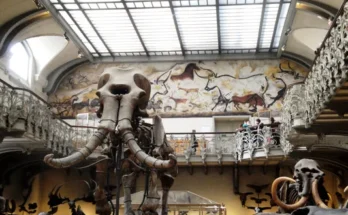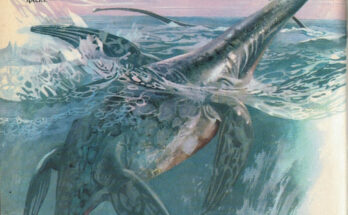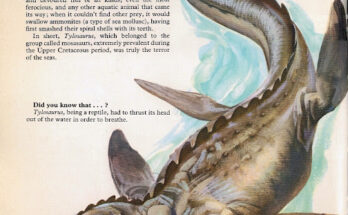Rhamphorhynchus: A Comprehensive Tutorial on a Prehistoric Pterosaur

Introduction
Rhamphorhynchus, an early pterosaur from the Jurassic period, offers a captivating glimpse into the aerial predators of prehistoric times. This tutorial provides an in-depth examination of Rhamphorhynchus, focusing on its anatomy, flight capabilities, and evolutionary significance. Supported by detailed illustrations and scientific insights, this guide is designed for students, educators, and paleontology enthusiasts interested in the origins of avian flight and the diversity of Mesozoic reptiles.
Overview of Rhamphorhynchus
Rhamphorhynchus lived approximately 150-165 million years ago, thriving as one of the first terrestrial animals to master powered flight. The image depicts this creature with a wingspan of up to 1.8 meters (6 feet), showcasing its lightweight frame and membranous wings. With a long, pointed beak filled with needle-like teeth, Rhamphorhynchus was a skilled hunter of small prey, such as insects and fish, marking it as a key species in the pterosaur lineage.
Anatomical Features
- Wings and Flight Structure: The image highlights Rhamphorhynchus’s wings, formed by a membrane of skin stretched between an elongated fourth finger and the body. This structure, supported by a lightweight skeleton, enabled efficient gliding and powered flight, a significant evolutionary advancement.
- Beak and Teeth: Equipped with numerous sharp, pointed teeth, as shown in the illustration, Rhamphorhynchus was adapted to catch and hold slippery prey. The long tail, ending in a diamond-shaped rudder, provided stability during flight.
- Sensory Adaptations: The “Did You Know?” section notes that Rhamphorhynchus had a larger brain and eyes than many reptiles, suggesting keen senses that aided in hunting and navigation.
Lifestyle and Behavior
Rhamphorhynchus likely spent much of its life in the air, using its wings to glide and hunt over ancient seas and coastlines. The image’s depiction of its poised stance suggests it could take off from cliffs or trees, swooping down to snatch prey with its teeth. The text indicates that when grounded, it may have crawled awkwardly, relying on its wings and claws to maneuver, a behavior typical of early pterosaurs before the evolution of more agile terrestrial movement.

Evolutionary Significance
As a member of the pterosaur group, Rhamphorhynchus represents an early experiment in powered flight among reptiles. Its adaptations predate those of modern birds, providing insights into the development of avian characteristics. Fossils, often found with preserved stomach contents like fish, confirm its piscivorous diet and highlight its role in Jurassic ecosystems. The creature’s evolutionary lineage offers a bridge between terrestrial reptiles and the aerial dominance of later pterosaurs.
Educational Applications
This tutorial is an excellent resource for teaching evolutionary biology and paleontology. Educators can use the image to illustrate the mechanics of flight, the diversity of prehistoric life, and the transition to avian adaptations. Students can analyze Rhamphorhynchus’s anatomy to explore concepts like aerodynamic efficiency and sensory evolution. The visual aid enhances interactive learning and encourages further research into Jurassic fauna.
Scientific Context
Fossil evidence of Rhamphorhynchus, primarily discovered in Europe (e.g., the Solnhofen Limestone), includes well-preserved specimens with intact wings and tails. These fossils have provided paleontologists with detailed information on its flight capabilities and diet. Ongoing studies continue to explore its relationship with other pterosaurs, such as Rhamphorhynchus’s larger relative, enhancing our understanding of Mesozoic aerial ecosystems.
Conclusion
Rhamphorhynchus stands as a remarkable example of early flight evolution, blending reptilian and avian traits in a prehistoric predator. This tutorial offers a thorough examination of its anatomy, behavior, and evolutionary role, supported by the vivid illustration provided. We encourage readers to explore additional resources on pterosaur evolution and the rich biodiversity of the Jurassic period to deepen their understanding of Earth’s ancient skies.



